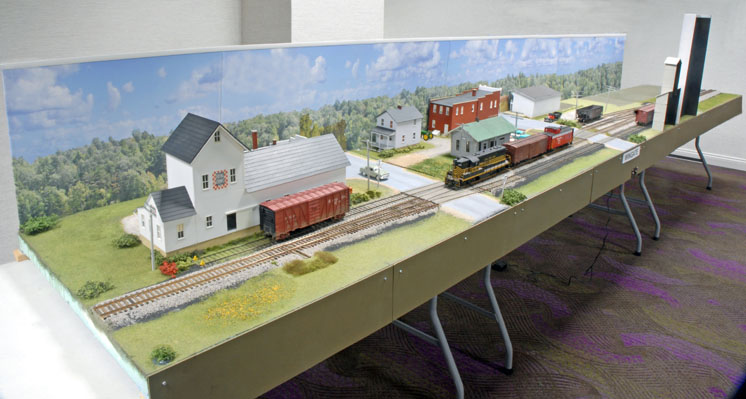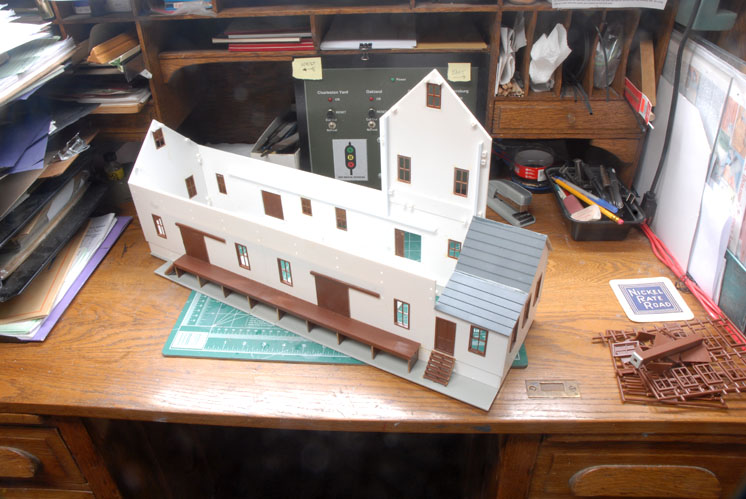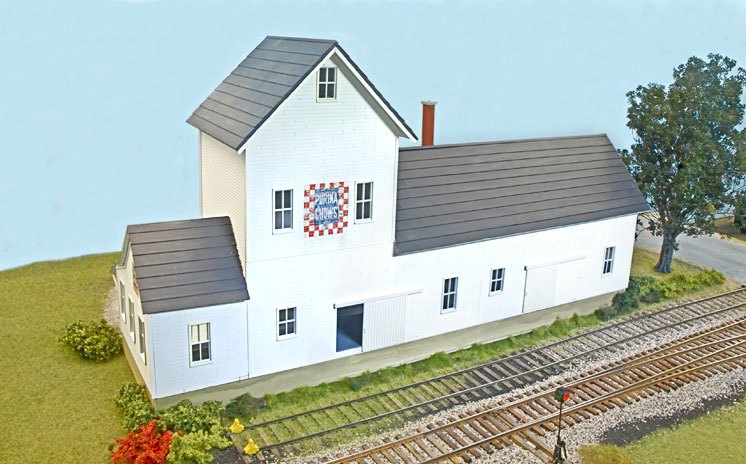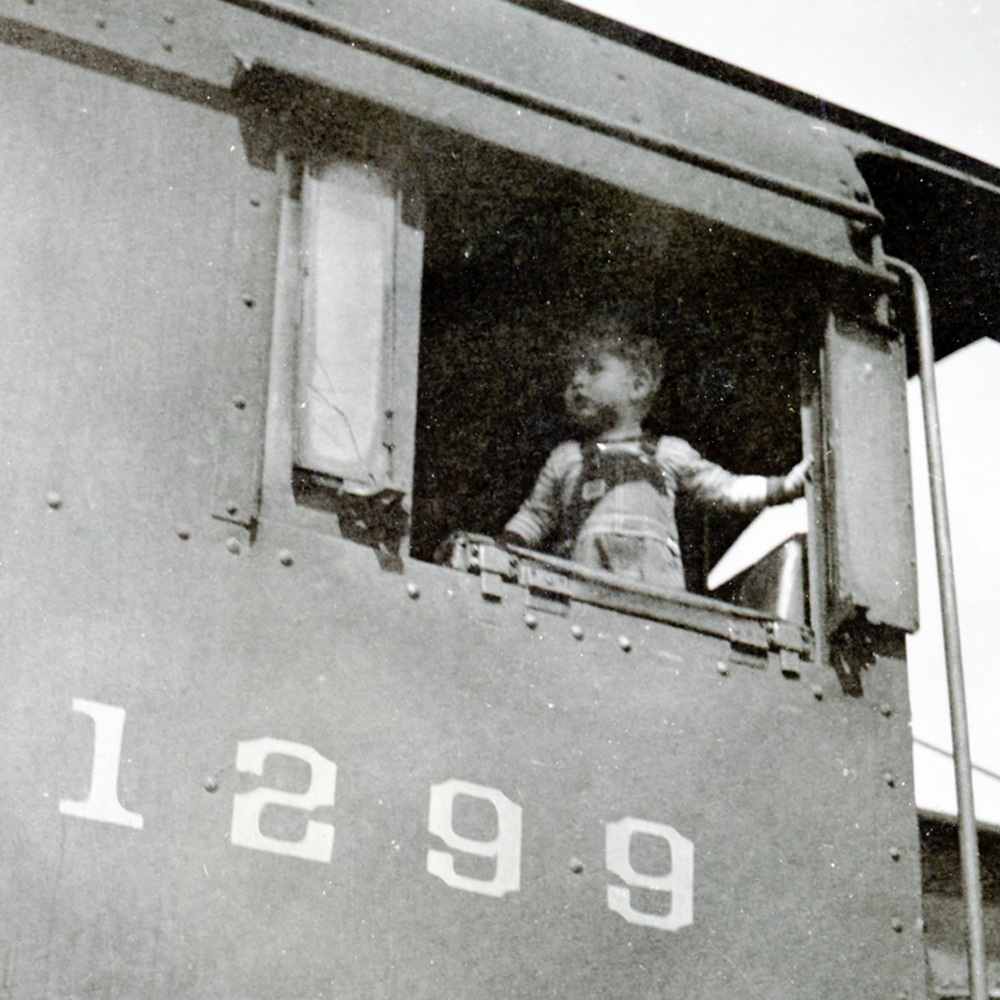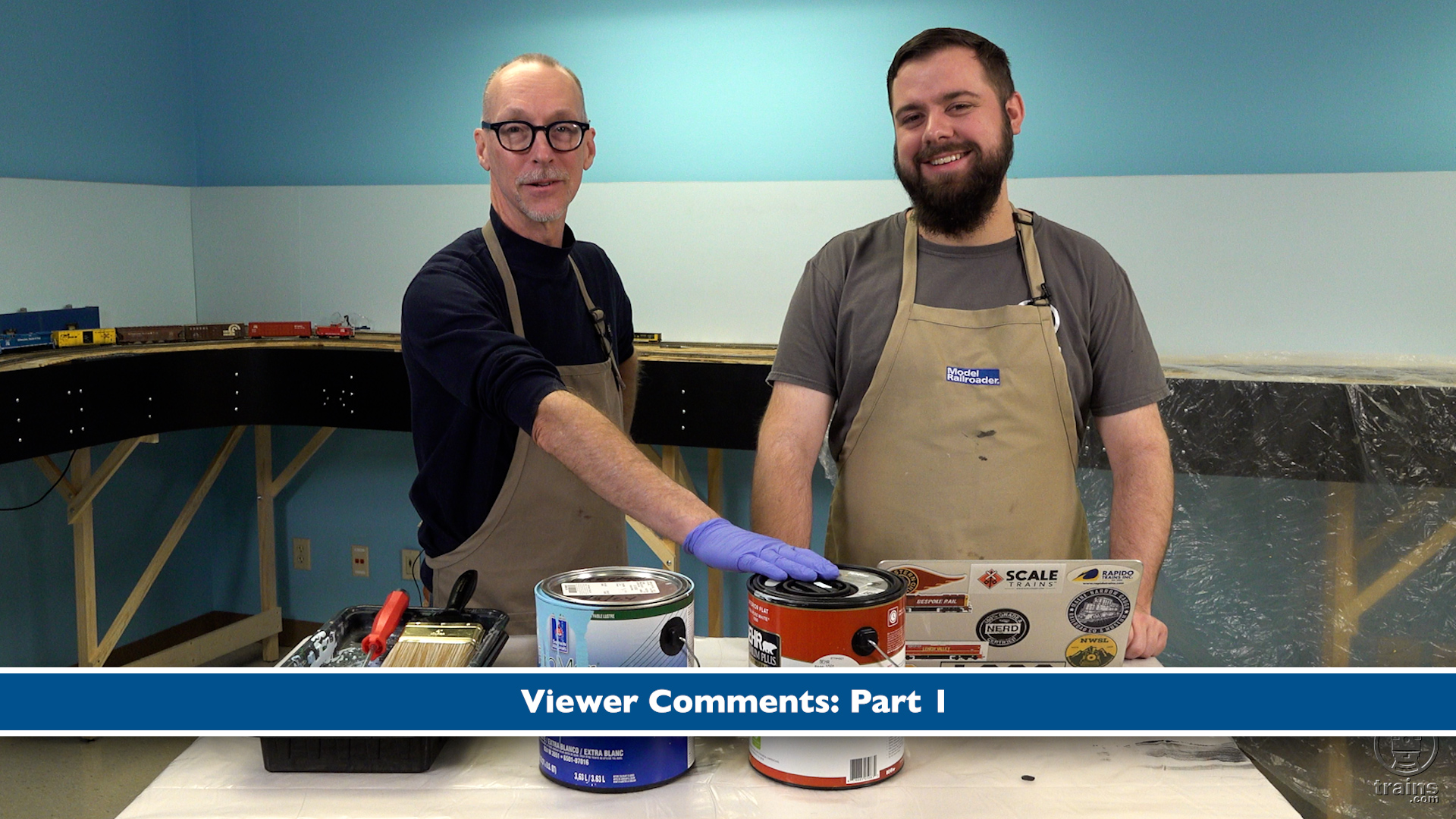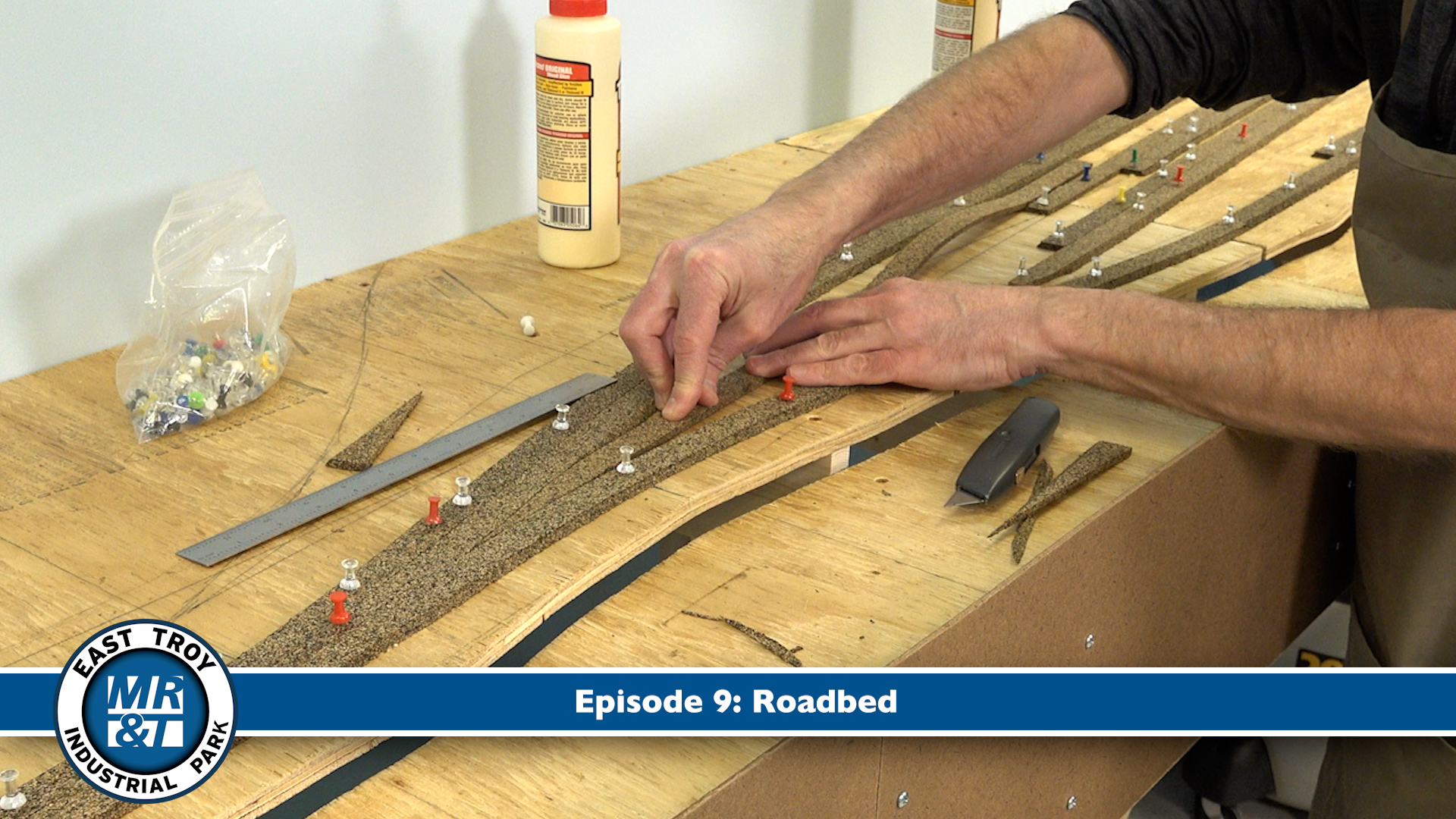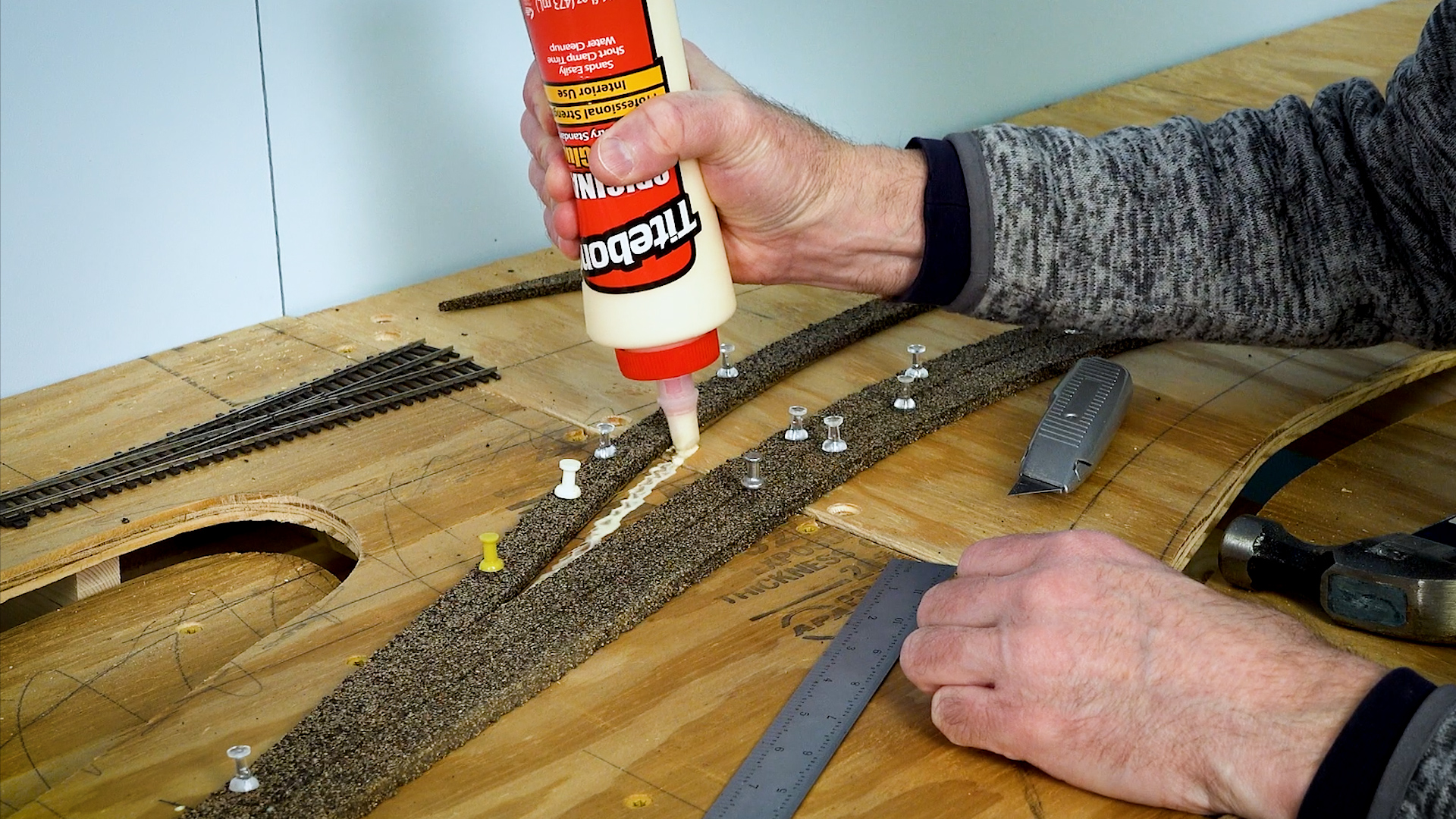My O scale Wingate is a portable one-town layout set along the Nickel Plate Road in 1954 that I first described in part 1 of the project layout series that appeared in the January 2020 Model Railroader. In the March 2020 issue I described structures on the layout. Below is some additional information about how I kitbashed one trackside industry, a feed mill, at Wingate.
Common sense suggests that the siding erased from the NKP diagram of Wingate was called the North Elevator Track, as there is also a South Elevator Track. But other than the footprint dimensions gleaned from an old Sanborn fire insurance drawing, I know nothing about this elevator.
Since there are already two grain elevators on my Wingate sectional railroad, and prototype information from which to kitbash a third wasn’t at hand, I took a close look at what was available and settled on the Atlas O Ace Feed & Supply Co. kit. Architecturally, this structure is identical to the popular Sunrise Feed Mill kit Walthers offers in HO. Its popularity is its main liability, as it’s familiar to most modelers. Its footprint also struck me as a bit small, so I bought two kits and rearranged the parts to create a longer structure that could serve two cars at once. The tower portion on the left end does a good job of disguising the kit’s heritage.
I searched Google Images for photos of old feed mills and found a gold mine. The main takeaway from these photos is that there are no architectural bounds on feed mills. They come in all shapes and sizes and were built from wood (often covered with corrugated metal), as well as stone and brick.
Feed mills received animal feed in bags shipped in boxcars. They originally did milling in-house, but by the 1950s or early 1960s, I will assume this mill simply received bagged feed in boxcars and transloaded it into trucks for distribution to local farms.
I used the two “back” walls to make the new trackside wall. (The loading ramp seemed more appropriate for the truck side.) I first measured the distance between the doors of two coupled 40-foot boxcars and then marked the second wall so that one cut on its left end would properly space the building’s big doors. A small filler piece was required. Making photocopies of kit walls and doing the cutting and fitting on paper first is a good idea.
The two end walls from one kit could be used as intended. The larger end wall from the second kit created the second story trackside wall mounted atop the truncated first-story wall. The other wall and both side walls for the raised area were made from Evergreen V-groove siding with .100″ spacing.
The long kit roofs were unusable owing to the bare area where the cupola normally would go. So I used Evergreen .080″ plain sheets and added 24″-wide strips of .020″ stock to create rolled tar paper roofing that approximated the kit roof’s appearance. I shortened the brick chimney and placed it on the back roof.
I painted the model white, a color typical of many Midwestern structures, using spray paint. Barn red would also be appropriate but call more attention to it than I desired.
The feed mill office was swiped from the lumberyard kits. It too was doubled in length to look more realistic and to disguise its kit heritage.





